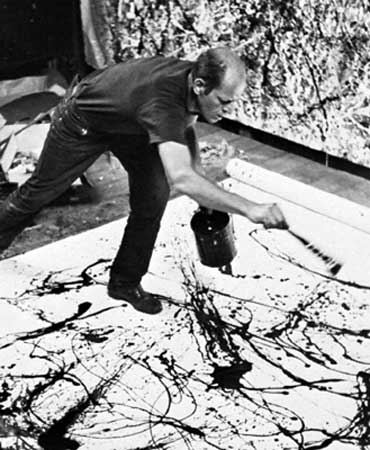
Jackson Pollock. Full Fathom Five. 1947. Oil on canvas with nails, tacks, buttons, key, coins, cigarettes, matches, etc., 50 7/8 x 30 1/8″ (129.2 x 76.5 cm). Gift of Peggy Guggenheim.
From the collection of the Museum of Modern Art, New York City
 I can’t remember the first time that I saw a picture by Jackson Pollock, right. Since I was born fewer than ten years after his death in 1956, his work seems like it was always around, if only, and mostly, as a representation of how debased “art” had become, that being an extension of what common folk accepted as modern society’s total insanity.
I can’t remember the first time that I saw a picture by Jackson Pollock, right. Since I was born fewer than ten years after his death in 1956, his work seems like it was always around, if only, and mostly, as a representation of how debased “art” had become, that being an extension of what common folk accepted as modern society’s total insanity.
That said, I also can’t recall a time that I didn’t passionately love his paintings. I had to grow into Motherwell and Rothko, but Pollock always spoke to me, even when very young. Perhaps it was those wildly dripped lines which, even to a child, suggest rampant energy, and clearly convey that you are not looking at a pastural field. There seemed something bad about the work, as though the artist was misbehaving. The snob’s retort—”My kid could do that”—was meant as a putdown. But, as was often the case, those attempting to injure the artist’s reputation often found themselves unintentionally giving up mad props. “There was a reviewer a while back” Pollock once said, “who wrote that my pictures didn’t have any beginning or any end. He didn’t mean it as a compliment, but it was.” As always, they look, but do not see.

1 comment so far ↓
I enjoyed this article if for nothing more than the dynamic title which I believe encompasses Pollock and his style and the shared sentiments of his ever-present intensity and emotion in his work.
Leave a Comment